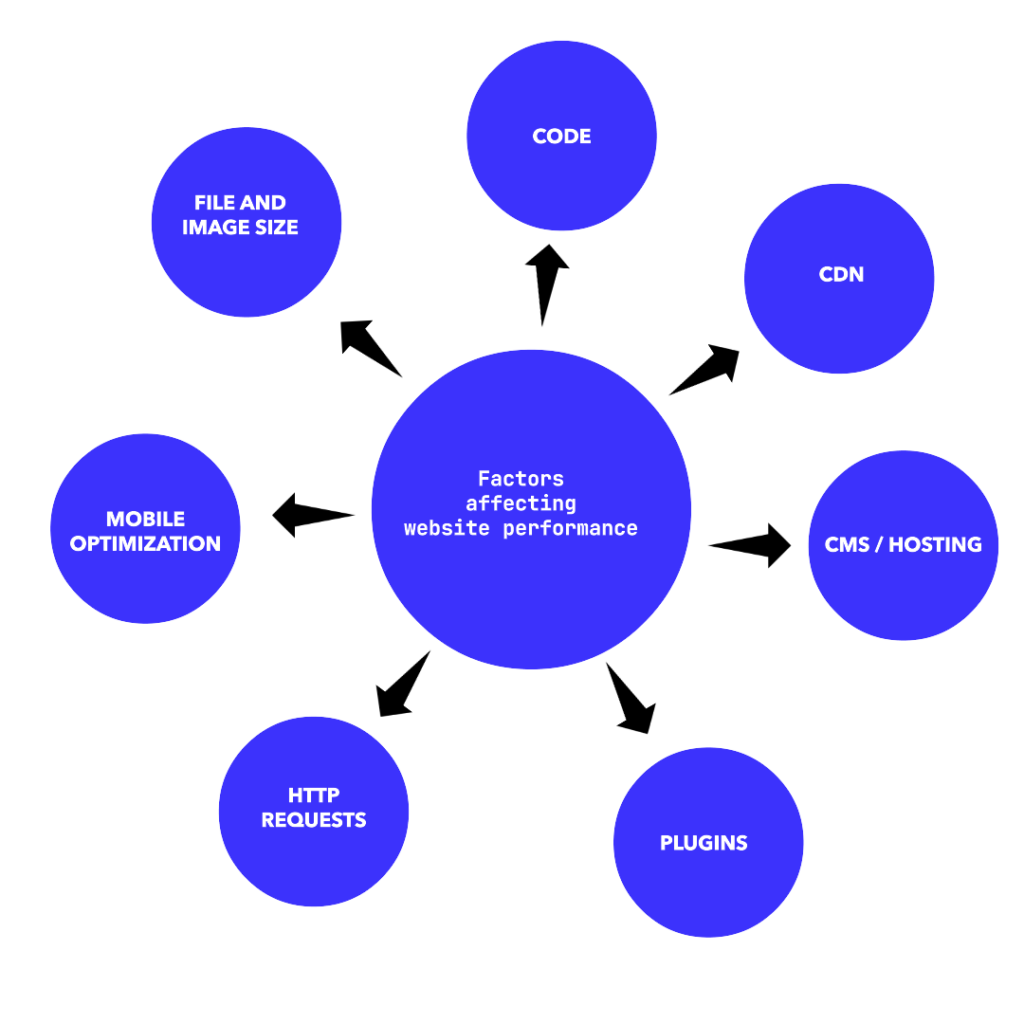In today’s fast-paced digital landscape, website performance plays a pivotal role in ensuring user satisfaction, search engine rankings, and ultimately, the success of your online presence. A slow website can turn away visitors, leading to decreased engagement, higher bounce rates, and diminished conversions. To prevent such setbacks, understanding the factors that affect website performance and implementing effective optimization strategies is essential. In this comprehensive guide, we’ll delve into the key factors influencing website speed, explore ways to enhance performance, and recommend top tools for performance monitoring – all in pursuit of a lightning-fast web experience.
Factors Affecting Website Performance

1. Code Efficiency:
- Minification and Compression: Optimizing HTML, CSS, and JavaScript files by removing unnecessary characters, comments, and whitespaces can significantly reduce file sizes, thus speeding up loading times.
- Browser Caching: Leveraging browser caching allows returning visitors to load your website faster by storing static resources locally.
2. Content Delivery Network (CDN):
- Geographic Distribution: Utilizing a CDN ensures that content is delivered from servers closer to the user’s location, reducing latency and improving loading times.
- Caching: CDN caching stores copies of your website’s static content across multiple servers worldwide, enabling quicker access for users.
3. Mobile Optimization:
- Responsive Design: Creating a responsive website design ensures seamless user experiences across various devices, enhancing accessibility and performance.
- Mobile-first Approach: Prioritizing mobile optimization in design and development guarantees faster loading times and better usability on mobile devices.
4. HTTP Requests:
- Reducing Requests: Minimizing the number of HTTP requests by combining CSS and JavaScript files, and using CSS sprites for images can streamline loading processes.
- Asynchronous Loading: Implementing asynchronous loading for non-essential resources allows critical content to render first, improving perceived performance.
5. Image and File Optimization:
- Image Compression: Compressing images without compromising quality using tools like JPEG Optimizer or TinyPNG can significantly reduce file sizes and enhance loading speeds.
- Lazy Loading: Delaying the loading of images until they’re needed can expedite initial page rendering, particularly beneficial for content-heavy pages.
6. CMS and Hosting Platforms:
- Platform Performance: Choosing lightweight and efficient CMS platforms like WordPress with optimized hosting solutions can positively impact website speed.
- Server Response Time: Selecting hosting providers with fast server response times and reliable infrastructure is crucial for ensuring swift website performance.
Improving Website Speed: Best Practices
- Regular Performance Audits: Conduct comprehensive performance audits using tools like Google PageSpeed Insights or GTmetrix to identify areas for improvement.
- Optimize Code: Minify and compress HTML, CSS, and JavaScript files, and leverage browser caching to reduce load times.
- Utilize CDN: Implement a CDN to distribute content globally and minimize latency for users across different regions.
- Prioritize Mobile Optimization: Design with a mobile-first approach, ensuring responsiveness and fast loading times on all devices.
- Optimize Images and Files: Compress images, use lazy loading, and optimize file sizes to expedite page rendering.
- Choose Efficient CMS and Hosting: Select lightweight CMS platforms and reliable hosting providers with fast server response times.
Top 5 Websites for Performance Testing
- Google PageSpeed Insights: Offers insights into website performance and suggestions for improvement based on Google’s best practices.
- GTmetrix: Analyzes website speed and provides actionable recommendations for optimization, including waterfall charts and page load times.
- Pingdom: Monitors website uptime and performance, offering detailed reports on load times, page size, and performance grades.
- WebPageTest: Allows in-depth analysis of website performance, including multi-step transactions and filmstrip views for visualizing loading progress.
- Dareboost: Provides comprehensive performance reports with actionable insights, highlighting areas for improvement and benchmarking against competitors.
Frequently Asked Questions (FAQs)
Q: Why is website speed important? A: Website speed directly impacts user experience, search engine rankings, and conversion rates. Faster websites lead to higher engagement, lower bounce rates, and improved SEO performance.
Q: How can I improve my website’s loading time? A: Focus on optimizing code, leveraging CDNs, prioritizing mobile optimization, reducing HTTP requests, optimizing images and files, and choosing efficient CMS and hosting platforms.
Q: Which factors affect website performance the most? A: Code efficiency, CDN utilization, mobile optimization, HTTP requests, and image and file optimization are among the key factors influencing website speed.
Q: Are there any free tools to test website performance? A: Yes, Google PageSpeed Insights, GTmetrix, Pingdom, WebPageTest, and Dareboost are popular free tools for analyzing and optimizing website performance.
In conclusion, mastering website performance requires a multifaceted approach that addresses various factors impacting loading times. By implementing the recommended strategies and leveraging top performance testing tools, you can ensure your website delivers an exceptional user experience while achieving optimal speed and efficiency.